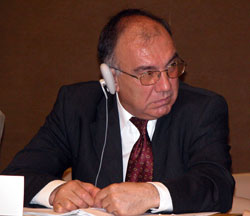by YILMAZ AKYUZ
 Yilmaz Akyüz, chief economist of the South Centre, Geneva
Yilmaz Akyüz, chief economist of the South Centre, Geneva
Foreign direct investment (FDI) is perhaps one of the most ambiguous and the least understood concepts in international economics. Common debate on FDI is confounded by several myths regarding its nature and impact on capital accumulation, technological progress, industrialization and growth in emerging and developing economies.
It is often portrayed as a long term, stable, cross-border flow of capital that adds to productive capacity, helps meet balance-of-payments shortfalls, transfers technology and management skills, and links domestic firms with wider global markets.
However, none of these is an intrinsic quality of FDI. First, FDI is more about transfer and exercise of control than movement of capital. Contrary to widespread perception, it does not always involve flows of financial capital (movements of funds through foreign exchange markets) or real capital (imports of machinery and equipment for the installation of productive capacity). A large proportion of FDI does not entail cross-border capital flows but is financed from incomes generated on the existing stock of investment in host countries. Equity and loans from parent companies account for a relatively small part of recorded FDI and even a smaller part of total foreign assets controlled by transnational corporations.
Second, only the so-called greenfield investment makes a direct contribution to productive capacity and involves cross-border movement of capital goods. But it is not easy to identify from reported statistics what proportion of FDI consists of such investment as opposed to transfer of ownership of existing firms (mergers and acquisitions). Furthermore, even when FDI is in bricks and mortar, it may not add to aggregate gross fixed capital formation because it may crowd out domestic investors.
Third, what is commonly known and reported as FDI may contain speculative components and creates destabilizing impulses, including those due to the operation of transnational banks in host countries, which need to be controlled and managed as any other form of international capital flows.
Fourth, the immediate contribution of FDI to balance-of-payments may be positive, since it is only partly absorbed by imports of capital goods required to install production capacity. But its longer-term impact is often negative because of high import content of foreign firms and profit remittances. This is true even in countries highly successful in attracting export-oriented FDI.
Finally, superior technology and management skills of transnational corporations create an opportunity for the diffusion of technology and ideas. However, the competitive advantage these firms have over newcomers in developing countries can also drive them out of business. They can help integrate developing countries into global production networks, but participation in such networks also carries the risk of getting locked into low value-added activities.
These do not mean that FDI does not offer any benefits to developing and emerging countries. Rather, policy in host countries plays a key role in determining the impact of FDI in these areas. A laissez-faire approach could not yield much benefit. It may in fact do more harm than good.
Inter Press Service for more
